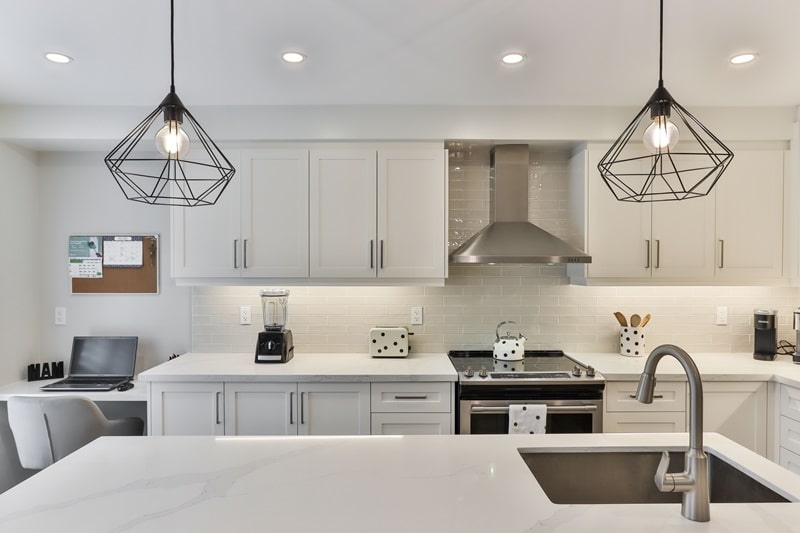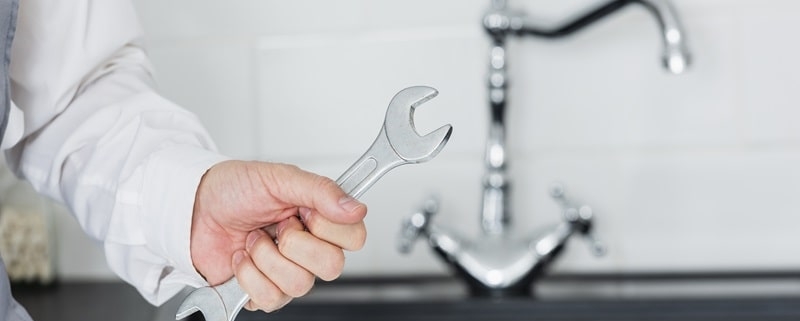How to Install a Kitchen Sink: Everything You Need to Know
Ever stared at a heap of dirty dishes and wished you had a brand-new kitchen sink to make the chore more bearable?
Imagine washing your dishes in a sink that’s not just new, but installed by you, blending seamlessly with your kitchen decor. The sense of accomplishment, combined with the visual transformation of your kitchen, is nothing short of inspiring.
Here’s a step-by-step on how to install your dream kitchen sink.
Different Types of Kitchen Sinks
Your options for kitchen sinks can be as varied as the number of dishes piled in them after Thanksgiving dinner. Below are some of them:
- Drop-In Kitchen Sinks: These are the quintessential sinks that “drop” into a hole in your countertop. It’s like ordering the basic latte – familiar, comforting, and always a good choice. These sinks have a visible edge that rests on the countertop, making installation a breeze.
- Undermount Sinks: Hidden champions of the sink world, these are mounted below the countertop. Think of them as the secret ingredient in a dish; you don’t see them, but they make all the difference. It’s the kind you’d find in those glossy custom cabinets in Las Vegas, sleek and hidden beneath your countertop. They provide a sleek look and make it easy to sweep countertop debris directly into the sink.
- Farmhouse or Apron Front Sinks: These sinks wear their history on their sleeves, or rather, their fronts. A callback to kitchens from yesteryears, they feature a forward-facing side that replaces a portion of your cabinet. It’s like that heirloom dish your grandma passed down – filled with stories and character.
For those seeking something more unique, perhaps peek into custom cabinets in Las Vegas, where you can tailor-make a set-up as individual as your culinary preferences.
Is It Easy to Install a Kitchen Sink?
Learning how to install a kitchen sink isn’t like flipping pancakes. While some seasoned DIY enthusiasts may find it manageable, for most people, it’s a tad more complicated than merely washing your hands off a task.
Additionally, there are various types of drainage that you have to consider. However, with the right tools and a touch of perseverance, it’s absolutely doable.
Step-by-Step Guide
If you want to know how to install a kitchen sink, the first step is to remove the old sink and other components attached to it. Here’s how:
Disconnect and Remove the Old Sink
Before you start dreaming of your shiny new sink, you need to say goodbye to the old one. Turn off the water supply valves and start disassembling the old sink.

Turn off the Water Supply Valves
- Locate the water supply valves: Typically, these are located underneath the sink inside the cabinet. There will usually be two valves: one for hot water (often colored red) and one for cold water (often colored blue).
- Turn each valve to the “off” position: Rotate them clockwise until they cannot turn anymore.
- Open the faucet: To release any residual water or pressure left in the pipes, turn on the faucet at the sink. This will allow any remaining water to drain out.
Disconnect the Drain Lines
- Place a bucket or towel under the drain lines: This is to catch any remaining water that may spill out when you disconnect them. And for those unfamiliar with the sink drain parts, study them first.
- Locate the P-trap: This is the U-shaped pipe beneath the sink.
- Disconnect the P-trap: Using a pipe wrench or adjustable pliers, loosen the nuts on both ends of the P-trap, then carefully slide it down and off the tailpiece. Be ready for water to spill out.
- Disconnect the waste lines: If your sink has a garbage disposal, you’ll need to disconnect it from the drain. If there’s an electrical connection, make sure to turn off the power and disconnect it first.
Cut the Caulk Bordering the Sink
- Use a utility knife or a putty knife to carefully score the caulk that’s sealing the perimeter of the sink to the countertop.
- Be cautious: Do this gently to avoid damaging the countertop or the backsplash.
- Once you’ve scored all the way around, try gently lifting or moving the sink to see if it’s loosened. If not, you may need to cut deeper or apply a bit more force.
Remove the Old Sink
- After the caulk has been completely cut, slide a putty knife or flat bar under the edge of the sink to further loosen it from the countertop.
- From below, check if there are any mounting clips or brackets holding the sink in place. If there are, loosen and remove them.
- With the help of an assistant, carefully lift the sink out of the countertop. If it’s particularly stubborn, you might need to gently use a rubber mallet to tap it from below.
- Once the sink is removed, thoroughly clean the area where the old sink was situated. Scrape away any old caulk or adhesive to prepare the surface for the new sink. If things get tough, and you’re unsure about how to install a sink, there’s no harm in seeking help.
How to Install a Kitchen Sink?
Venturing into the world of DIY kitchen upgrades? Mastering how to install a kitchen sink is a game-changer. Navigate through these steps to seamlessly transform your kitchen space and revel in your DIY prowess.
Measure the Countertop Opening
Starting your kitchen sink installation is a bit like preparing a new recipe: precision is key. First and foremost, measure the countertop opening accurately. An improper fit can lead to complications down the line, so use a reliable tape measure.
Ensure the dimensions align with your chosen sink, making adjustments if necessary. Think of it as ensuring your baking tin is the right size for that special cake.

Install the Faucet and Water Supply Lines
Next, move on to the faucet and water supply lines. This is like connecting the ingredients for the perfect soup: essential components need to come together. Align the faucet with its designated hole, securing it in place.
Attach the water supply lines, ensuring a snug fit to avoid potential water leakage. The harmony between these parts is crucial for a smooth-flowing sink. And once they’re aligned, home improvement really feels within grasp.
Reconnect the Drainpipes and Appliances
With the faucet in place, it’s time to reconnect the drainpipes and any additional appliances, akin to adding the final touches to a dish. This step ensures your sink isn’t just for show but is fully functional. Tighten all connections, but take care not to overtighten and damage the parts. It’s all about finding the right balance, like seasoning a meal.
Turn on the Water and Test for Leaks
Finally, the moment of truth. Turn on the water, watching its flow, like seeing a recipe come to life. Be vigilant for any signs of leakage. Should you spot any unwelcome drips, revisit your connections and seal any gaps. Remember, perfection takes time, but with patience, you’ll have a sink that’s both stylish and efficient.
When to Contact a Professional
Sure, going the DIY route can be enticing, much like attempting a complex dish for the first time. However, sometimes it’s best to call in the professionals, just like you’d head to a restaurant for a gourmet meal.
If you ever find yourself in over your head, don’t hesitate to reach out to plumbing services near you. And for those in Las Vegas, you can always contact us. After all, installing a sink can be tricky, but it doesn’t mean you have to throw everything and the kitchen sink at the problem.
Installing a kitchen sink can be a rewarding endeavor, enriching both your DIY skills and your home’s aesthetic. With the right guidance, patience, and tools, your kitchen can shine anew. Remember, every successful project starts with a single step, so take the plunge and transform your kitchen today!





